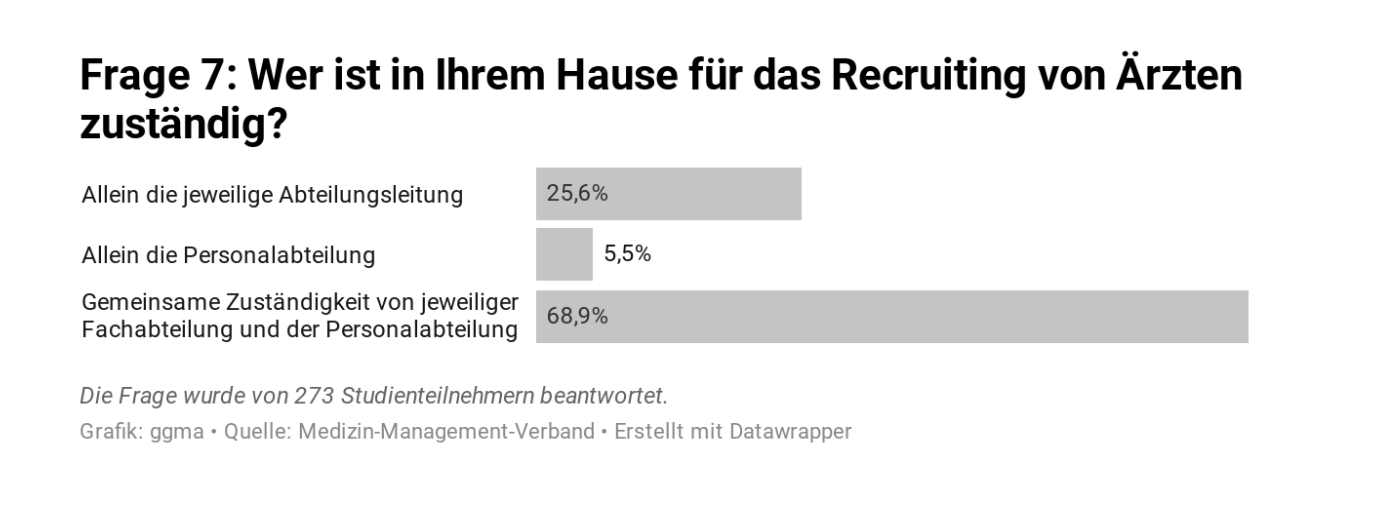It can do much more than just solve administrative problems. Professional human resources work can be strategically important, especially in times of heavy pressure on hospitals. On the one hand, the shortage of skilled workers has been affecting companies for years. According to the DKG-Skilled Worker Monitoring 2025, this is largely due to demographic change. The staffing problems (S.41ff) are high in all occupational groups and job vacancies are long-term. This difficulty also contributes to high staff turnover. According to the Hospital Rating Report 2025, hospitals are often over-indebted and their financial situation is more strained than ever before.
The reasons for this are manifold, but are exacerbated by the shortage of staff. This is because a lack of skilled workers leads to the hiring of cost-intensive temporary workers and the loss of potentially profitable care services.
A company's human resources department should therefore take strategic measures to ensure the future viability of the organisation.
Human resources measures
Firstly, substance-oriented sustainability and ‘employee orientation’ can help, writes the German Medical Journal. The well-being of patients still takes precedence over that of employees, and decisions are made hierarchically. Open corporate management, on the other hand, can make a decisive difference. On the one hand, it increases employee involvement. This makes a company more attractive to both existing staff and new recruits. On the other hand, human resources itself can be ‘openly’ involved in decisions and thus respond to the needs of employees.
The following measures strengthen employee orientation:
- Individualised work schedules, reduced working hours, 4-day-week
- Individualised onboarding and a feedback culture
- Individualised and preventive care services, childcare, benefits
- Opportunities for further training
This individual adaptation reflects the spirit of the times in a volatile and fragile world (VUCA/BANI), which requires the greatest possible flexibility. Involving HR more closely in strategic planning therefore improves a company's resilience. This is because the Human Resources (HR) department is aware of individual needs, challenges and qualities. Personal communication is fundamental in this regard and should also be strategically integrated into the company. At the same time, growing digitalisation plays a decisive role.
Digitalisation to support human resources work
The use of AI and robotics is becoming increasingly widespread in both nursing care and medical treatment. Human resources work can benefit from successful digitalisation and support employee retention.
Administrative level
AI-based systems can support HR department employees at the administrative level, for example by making working hours and payroll transparent and efficient.
Digital systems can also strengthen employee retention by adapting duty rosters to individual needs (see above) and even supporting recruitment through skill matching. In nursing in particular, with the skill-grade mix, i.e. the mixture of different levels of training due to advancing academisation, it is helpful to fill positions according to the level of training. AI can evaluate and deploy targeted training, further education and other skills.
Employee surveys can also be conducted more accurately with AI because, for example, continuous text can be more easily incorporated into the overall evaluation.
Digital recruiting
Finally, recruiting can also be done increasingly digitally. The younger generations in particular, as digital natives, are fully connected via social media and expect to be approached via this channel. At the same time, it is natural for them to respond and to exchange the necessary documents digitally. A mix of different recruiting channels can be overviewed and organised by AI. Active sourcing by a recruitment consultancy is also useful at this point. This will work closely with the HR department. Just as the specialist departments in hospitals already do when recruiting doctors.

Mutual consultation between the specialist department, human resources department and hospital management can, at best, create an effective strategy not only for recruiting.
Further training
Digitalisation requires both the personnel to guide it and the appropriate infrastructure. In IT in particular, the shortage of skilled workers is high across all sectors. Continuing education opportunities for the workforce are therefore necessary to advance digitalisation and increase acceptance of new technologies. At the same time, continuing education promotes employee loyalty and enhances a company's reputation.
Finally, digitalisation also requires a high level of security. The protection of personal data is particularly important in the medical sector.
Ethical and compliance standards in employer branding
Compliance standards in hospitals are not only important for data protection and information security. Regulatory requirements must also be observed, and failure to do so can lead to a loss of reputation. Reputation can be strengthened to the same extent if compliance and ethical standards are observed. This can result in successful employer branding, which is one of the factors contributing to the success of clinics. Human resources should work with marketing and management to develop a strategy, as described above for recruiting. The employer brand developed as a result can be used as a distinctive corporate brand in both external and internal communication. Stepstone describes how the requirements for the employer brand can in turn be supported with data.
Professionalised human resources work and the role of external HR consulting
It also emphasises that it is important to adhere to the standards described in employer branding. Ensuring this can in turn be the task of coordinated, professionalised human resources work. It guarantees individualised measures and personnel plans, further training and the widespread use of digitalisation. Targeted recruiting and consistent employer branding can increase a company's attractiveness and at the same time retain long-term employees with the help of external HR consulting. The trust that consistent HR work builds is reflected in the trust that employees place in it.
Conclusion
The human resources (HR) department in hospitals is therefore an important player in attracting and retaining staff, especially in times of skilled labour shortages. Its role is by no means limited to administrative tasks. Rather, with a professional approach, it can provide important guidance on duty rosters, staffing and recruitment. If it is integrated wisely, it can support strategic decisions, offer trend-setting training and thus have a significant impact on the future of the company. With the supportive expertise of an external HR consultancy, further impetus can be provided. Digitalisation measures can be supported and active sourcing can be carried out in parallel. In this way, a hospital or medical care centre can establish itself as an attractive and future-oriented employer.






